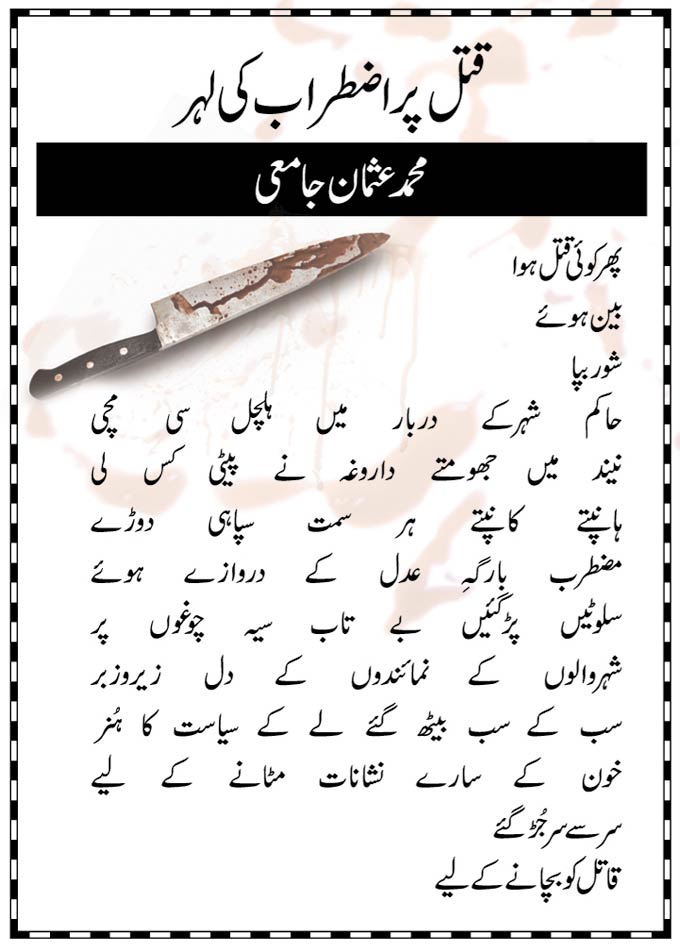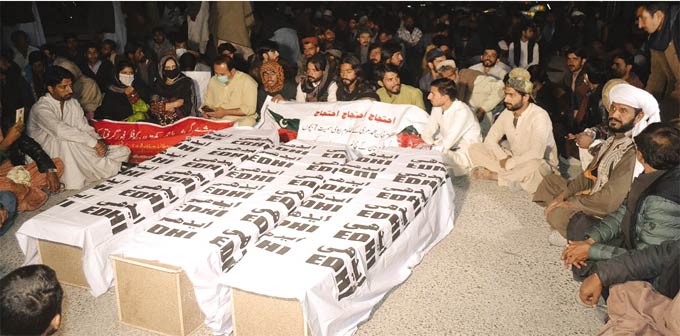Whenever the problems of Balochistan are mentioned in the whole world, the chiefs of Balochistan definitely come to mind.
The chieftainship system of Balochistan that is in place today was founded by Robert Sandeman in 1876, when he was appointed Chief Commissioner of Balochistan and Governor General of India. He gave many privileges to the Sardars in Balochistan, gave them personal and government jobs and gave stipends to thousands of people through these Sardars.
The children of these chiefs were given special scholarships and were sent abroad for education so that their children could get free higher education.
All chiefs of Balochistan are highly educated, many chiefs are still contributing to the government through remote control sitting in their respective areas. In Balochistan, the child of the poor is getting poorer and the child of the rich is getting richer.
If the child of a poor person can read and write, he is given an honorary Munshi degree. Former Prime Minister Zulfiqar Ali Bhutto had announced the end of chieftaincy in Quetta on April 8, 1976, but it could not be implemented so far.
The late Zia-ul-Haq pleased all the chiefs for peace in their respective areas and continued to enjoy ruling in comfort. Similarly, Pervez Musharraf also tried hard to end this system due to which Nawab Akbar Bugti was also martyred, but still the chieftaincy system could not be ended.
Even today in Balochistan, the Otaq system of many chiefs and the system of taking forced labor exists with the whole Tamtaraq. These leaders make their own decisions.
In Balochistan, people are considered slaves. All this has been going on for centuries, Baloch were also in the forefront in the war of independence. Surprisingly, Robert Sandeman was the only leader who traveled to Balochistan without an escort, because of his love for the Baloch. No one ever raised a finger towards them. He locked the chiefs in all the tribal areas in such a way that the chiefs could not forget till today.
He also brought many benefits to the Baloch nation, opened schools, built hospitals in the areas of these chiefs and also sent the sons of these chiefs to study abroad. They even set a quota for the share of each chief, but in today’s conditions, no chief roams alone in his area, he must have ten or twenty bodyguards with him.
Today, all chieftains rely on others for their own protection, the famous saying of the Baloch is that when you stand up to take your right, first of all you should be ready to lose your life, maybe this war May your life be gone. But knowing that if your people get the right, your sacrifice will not be lost.
The fire of revenge continues to burn among the Baloch. The battles between the chiefs of Balochistan are also famous, as well as the relationships between most of the chiefs. The chieftainship of Balochistan is as old as their mutual enmity.
These enmities pushed them back, in view of these conditions there is a wave of concern in Balochistan. The British had said that if you give respect to the Balochs, they will offer their necks to you, but if you try to force them, they can kill you too.
History is a witness to the truth of this saying. In 1958, under the leadership of Nawab Nowroz Khan, a large number of Baloch went to the mountains and the government declared war on time. He stayed on the mountains for several months, then one day the commanders put their hands on the Quran and said that our war is over, but the next day Nawab Nowroz Khan was put in jail along with his friends.
He was tried for sedition and sentenced to life imprisonment, then he and his loved ones were hanged in 1962.
Then an old Sardar was called and shown the dead bodies of his friends, at that time this Sardar said the historical phrases, “These are all my sons, this is the blood of Baloch, those who sacrificed themselves in the path of freedom, now war till Qiyamah.” It will continue. Since 1948, many chiefs have been martyred, many chiefs continued to oppress the people in their respective areas and many chiefs left the country.
The leaders of Balochistan have destroyed the education system and turned it into a shambles, leaving no stone unturned to close even the hospitals, turning government buildings into private property. At the behest of these chiefs, their people even give their lives.
After Nawab Nowroz Khan, many incidents have taken place in Balochistan in the last twenty years, in which the name of Balochistan has been defamed, including the Dr. Shazia case in Dera Bugti, as well as the burying of 5 girls alive in Naseerabad. It turned out to be a very painful incident. The root of all the problems of Balochistan is one or the other, the punishment of which is being borne by the poor Baloch people. The lamp of life of the one who raises the voice of the poor is extinguished.
If the British had taken action against the same chieftains at that time, perhaps this chieftaincy system would not have prevailed today, educated youth would have replaced them.
Baloch Sardars also developed as fast as the world developed. They have got modern weapons, modern weapons which they can use wherever they want whenever they want. The province of Baluchistan is bordered by Afghanistan and Iran, where many great chieftains have passed through in ancient times and have similar customs and traditions.
A major cause of smuggling in this region is the chieftains here. Neither the police, nor the army, nor the FC operate in their areas… if anyone operates, they are the leaders. Not even a bird beats its wings here without their will. Postings and exchanges are done at their discretion.
Even today the inhabitants of Balochistan are living in the stone age. Once an English journalist asked a Sardar at what age did he commit his first murder? So he started laughing and said that he was 14 years old when he committed the first murder. Similarly, in a district, a young man was fed up with unemployment and took part in the election, so he was publicly killed during the election and the election was postponed.
Three months later, when elections were held again, Sardar won. Similarly, in 1951, a ‘Jatt’ (a person belonging to a backward class) who contested the election, was also killed. From that day till today, no one could come against this chieftain.
Viewers repent to this day. If anyone is against these chiefs in Balochistan, he is the chief or his son or his family members. Many chiefs of Balochistan used to keep dogs and those dogs used to eat humans alive, now this custom has ended.
In the fate of the Baloch people, when will the period of oppression of these Baloch chiefs end? No one knows this.
The mention of the oppression and oppression of the Sardars became fresh again when the news spread on social media recently that a Sardar Abdul Rehman Khetran of Balochistan kept the family of a poor man Jan Muhammad Marri in his private prison and then his wife and two killed the sons while Abdul Rahman Khetran denied the incident.
According to Abdul Rehman Khetran, a son Sardar Inam Khetran from his third wife is plotting against him along with his enemies. So far, all the details of this incident have come to light on social media only through his son Sardar Inam Khetran.
Inam Khetran has also posted some photos of the oppressed family on social media, in which John Muhammad’s wife and children are shown in Sardar Abdul Rahman Khetran’s house, etc., which shows that this family was with Abdul Rahman Khetran. But at the same time, these pictures do not show that these people were being tortured or how a worker’s family lives freely in the owner’s house.
Such is the case! The same clothes in which the wife of John Muhammad Marri was shown were found on his dead body. Also, the throwing of the dead bodies into the well is also an important question, because if the killer was Abdul Rahman Khetran, it would have been better for him. He would have buried these bodies somewhere in such a large land or thrown them in some remote area where these bodies would have decomposed.
By throwing them in the well, the purpose is becoming clear that someone will come and see these bodies, and take them out.
A few weeks ago, the video of John Muhammad’s wife came out on social media, in which she was holding the Holy Quran and saying that she is in the custody of Abdul Rahman Khetran and that her daughter is being sexually and physically abused.
These videos and pictures were shared on social media by Abdul Rahman Khetran’s said son. Here the question arises that it is possible that John Muhammad’s wife was forced to testify by handing the Qur’an in his hand, although the oppressor usually does not need to take the Qur’an in his hand, his condition is testifying to his oppression. Is.
John Muhammad Marri, who is the head of the victim’s family, is accusing Abdul Rahman Khetran. According to John Muhammad Marri, he was being pressured by Abdul Rehman Khetran to testify in the cases against his son Inam Khetran, which John Muhammad Murri refused to do. And then according to John Muhammad Marri, his family was imprisoned in a private prison.
In this whole case, the evidence is showing against Abdul Rahman Khetran, but it is not necessary that the murderer is the same, Sardar Inamur Rahman should also be investigated. A high-level investigation committee should be formed which should not be pressured by the parties. The killers may also be enemies of Abdul Rahman. However, according to the incident so far, the family of John Muhammad Marri is oppressed.
And we must stand with the oppressed. The tyrant is yet to be determined, whether the tyrant is Yazid or Kufi himself or both. According to Khan Mohammad Marri, the dead bodies belong to my wife, eldest son Mohammad Nawaz and my second son Abdul Qadir who were imprisoned in the private prison of provincial minister Sardar Abdul Rahman Khetran for a long time. 5 more members of my family are still imprisoned in Sardar Abdul Rahman Khetran jail.
According to the latest reports, the bodies found in the well are not those of John Muhammad Marri’s wife and sons. The investigation is ongoing, then who are these people killed? This fact has made the matter more complicated.
All the questions and confusions of this matter are in their place, but the question is that after the video came out, where was the state when it was known that a woman along with her children was suffering the atrocities of the Sardar? And why “someone” was not able to take notice of this matter? Although the doors of justice are opened late at night to hear political cases to stay in the headlines of the media.
It is very sad that in Balochistan, the killers of any victim are not caught, the robbers are not caught, the rapists of children are not caught, those who steal money from the mouths of millions of Pakistanis by corrupting billions of rupees are not caught.
At that time Sardar Khetran is the powerful ruler of his region and Barkhan is his kingdom. Not even a bird can be killed in Barkhan without their approval, literally, not literally. Their class relations are with the military, political and judicial elites of the Pakistani state.
In such a situation, it is naive to think that the law of the state will punish them even if they are found guilty. Judicial Commission, JIT, Inquiry Committee, etc., all these are tactics to give safe passage to this blood-sucking class.
The Barkhan tragedy has made our heads bow in shame. In the society, in the place where respect is given to the oppressor and the voice of the oppressed is suppressed, his cries are neglected, his cries are forgotten, then such incidents happen there. It will continue to happen.
If such an incident had happened in a conscientious and civilized society, not only the accused would have been arrested, but all privileges, protocols and authority would have been taken away from him, but this does not seem possible in Pakistan. As a nation, we have to think about this.

(function(d, s, id){
var js, fjs = d.getElementsByTagName(s)[0];
if (d.getElementById(id)) {return;}
js = d.createElement(s); js.id = id;
js.src = “//connect.facebook.net/en_US/sdk.js#xfbml=1&version=v2.3&appId=770767426360150”;
fjs.parentNode.insertBefore(js, fjs);
}(document, ‘script’, ‘facebook-jssdk’));
(function(d, s, id) {
var js, fjs = d.getElementsByTagName(s)[0];
if (d.getElementById(id)) return;
js = d.createElement(s); js.id = id;
js.src = “//connect.facebook.net/en_GB/sdk.js#xfbml=1&version=v2.7”;
fjs.parentNode.insertBefore(js, fjs);
}(document, ‘script’, ‘facebook-jssdk’));


